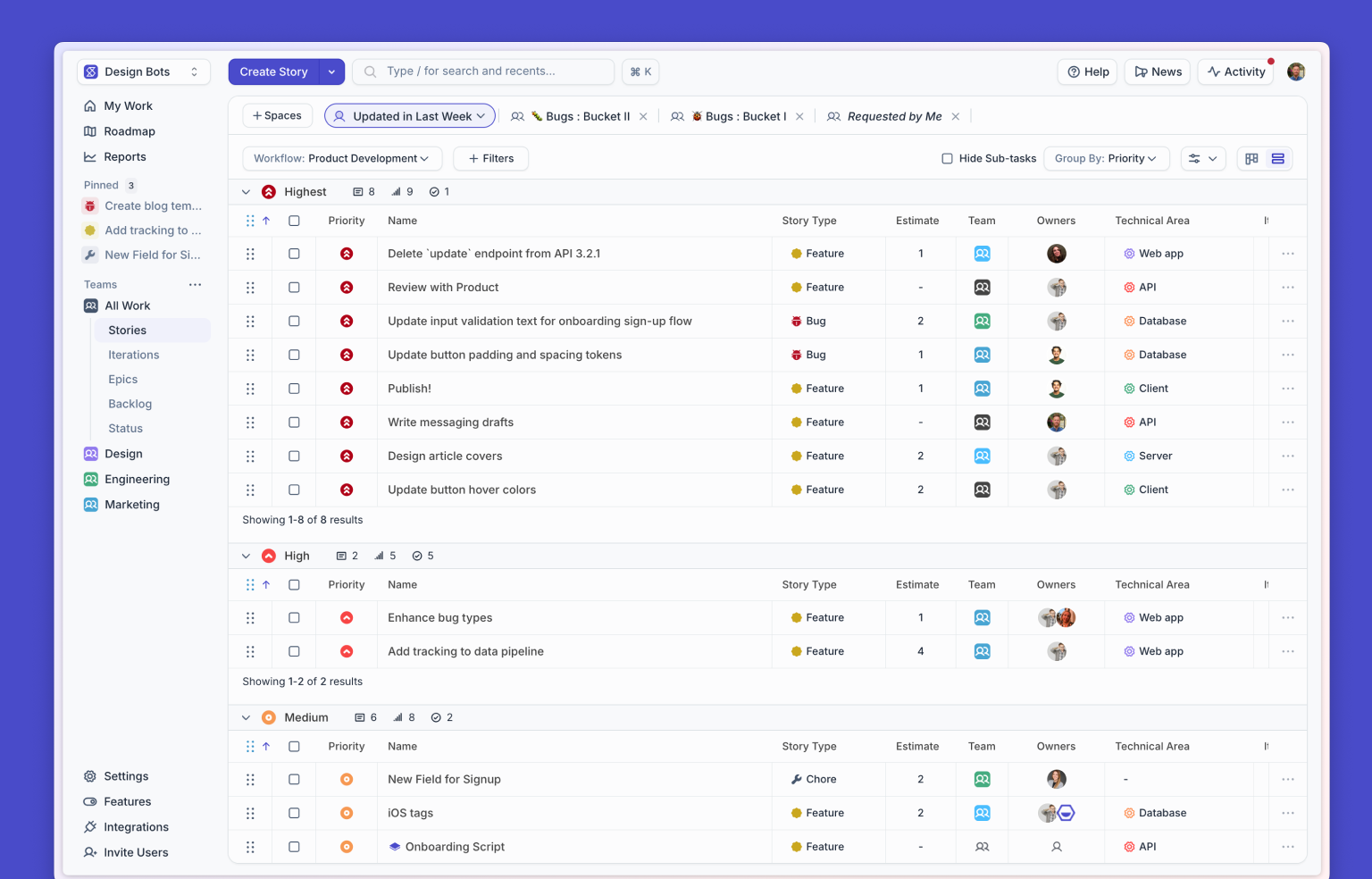It seems natural for engineers to work mostly with other engineers, designers with other designers, marketers with other marketers, and so on. How else would you organize teams?
This is one of those management philosophies that looks good on its face, but doesn’t necessarily hold up to scrutiny. Having designers only working with other designers (and engineers with other engineers, and so on) can create miscommunications, team friction, and a lack of transparency — the bane of productive managers everywhere.
On the other hand, cross-functional teams — teams that pull together people from different disciplines and background — can help break people out of their silos, ensure everyone is aligned towards a common goal, and create stronger, more innovative products as a result.
Let’s see what that looks like in practice and how you can make it work at your business, whether you’re a startup founder or working at an established business:
The Myth of the Lone Inventor
Everywhere you look in our culture — especially in startup culture — the myth of the lone inventor/creator persists. Benjamin Franklin, Thomas Edison, Nikola Tesla, Steve Jobs, Mark Zuckerberg, and the list goes on.
We think about these people as multitalented one-man-bands with a mastery of all necessary skills.
Unfortunately, this idea doesn’t match the reality: all of these people worked with teams of assistants and fellow inventors to develop their ideas and bring them to fruition. Even those creatives who could be characterized as loners were still inspired by their fellow inventors, as well as the culture and trends of the day.
We all like to imagine that the lone inventor exists outside the cultural and institutional forces that facilitate innovation. If people would simply try harder, pull themselves up by their own bootstraps, get better ideas, they could change the world. But history, like innovation itself, is messy.
Tech journalist Matt Novak in his 2013 SXSW talk
In short: innovation doesn’t happen in a vacuum.
The Biggest Breakthroughs Come from Teams
So, if innovation doesn’t come from one lone genius, and instead comes from teamwork, what does that look like in practice? And how can cross-functional teams be particularly helpful?
One of the biggest proponents of cross-functional teams is IDEO, a global design and innovation firm that worked on the Apple Mouse, among other projects.
When we spoke to Ian Lotinsky, CTO of LearnZillion, he said they were one of his major inspirations in changing his team structure, after he read The Art of Innovation, which discusses the importance of cross-functional teams with a diversity of perspectives and opinions. One of his biggest takeaways from the book?
“Innovation tends to happen in the context of a team, and having a diverse set of experiences and perspectives in the mix is going to lead more insights and better solutions.” — Ian Lotinsky, CTO at LearnZillion
Of course, IDEO isn’t the only company that’s noticed this. The Robert Half Management consulting firm surveyed over 2,200 CFOs and found that more and more C-level executives are focusing on adding job rotation into their team workflow:
Before, these functions were run as silos. But business has become more complex, and organizations continue to invest in technology to make strategic decisions. A few years ago it wasn’t necessary to work together — now it’s essential.
Tim Hird, executive director for Robert Half Management Resources
In Ian’s case, he was further inspired to bring together people from different roles after reading Getting Real, a book from the 37signals (now Basecamp) team.
In the book, they discuss creating teams with product designers and software engineers working together. Their reason for creating this structure was simple: because they want people working together to represent all sides of the application stack.
If you focus specifically on backend, you’re lacking some of the user-focus, and if you focus too much on the design/user side, you can neglect some of the infrastructure requirements. The cross-functional team format incorporates multiple perspectives to help avoid blind spots. At Basecamp, the first version of any product or any new functionality that requires both a UI and a backend always has those functional groups represented on the development team.
How to Build The Right Cross-Functional Team
The composition of your cross-functional teams will depend greatly on your product and industry. Kelly Wu, engineering manager at PolicyGenius, notes that their cross-functional teams typically include an engineer, a product manager, and a designer.
At LearnZillion, they need to represent more viewpoints, so their teams are made up of:
- A software engineer
- A product designer
- A product manager
- Another member of the company — depending on the feature, it might be someone from the academic team, customer success, marketing, or sales
Having different people from different backgrounds tends to get more work done faster and create better products.
Kelly Wu, Engineering Manager at PolicyGenius
All of these team members participate in scope discussions and the kickoff for the product:
- The product manager coordinates the schedule, makes sure that the right people are involved, does the pre-work before kickoff (user interviews, testing, surveys, and so on), and establishes a goal and objectives for the feature
- The product designer’s job is to do UX, design, and implementation of that feature
- The software engineer does all the backend work — data modeling and backend code — and they work very closely with the product designer
- The others are participating in the conversations or helping to evaluate iterations of the product and might also be producing material (in LearnZillion’s case, the curriculum or other supporting material for the feature/product)
Once the team is brought together and the right problem is identified, the team thinks about how to solve this with the product and works together to build a prototype. Then, that’s shown to the rest of the team for input and further ideation/iteration. Depending on the scope of the change, this can be very rapid (a few days) or spread out over a week or two.
It can be tempting to start pulling in people from every single company department, but most engineering managers we spoke with felt it best to resist that urge. Too many “cooks in the kitchen” can result in team members stepping on each other’s toes (or each other’s code). You need to walk a fine line of including everyone whose perspective is needed, without adding a person or three from every single department in the company.
Looking to incorporate cross-functional teams into your own development cycle?
Here are a few tips:
- Adjust the makeup of the team based on your company’s product and needs. In Ian’s case, he needs to have someone from the academic side of things on his teams. Having just a frontend and backend person on his team might represent both sides of the app stack, but it wouldn’t cover all the bases that need to be covered at LearnZillion. Similarly, adjust your cross-functional teams to match your product and company.
- Try a few different workflows with your cross-functional teams. In Kelly’s case, most of the collaboration is during set meetings — backlog grooming, standup, story kickoff, and feature desk checks, but ad-hoc meetings for problem solving occur as well. Your team might need another format — maybe only meeting up for the story kickoff, or story kickoff and post-mortem, but also 1–2 check-ins throughout the sprint. Experiment with a few different styles and see what works for you.
- Make sure to get feedback from your team. Talk to the team as a group, but also individually, about what they liked and didn’t like about the process. Did any of the team members feel like they were unnecessary or ignored in the process? Did working this way disrupt their normal workflow, or complement it? What would they like to see done differently next time?
Do you use cross-disciplinary teams when you’re developing products? We’d love to hear more about it on Twitter










.png)






%20(788%20x%20492%20px)%20(1).png)
.png)

